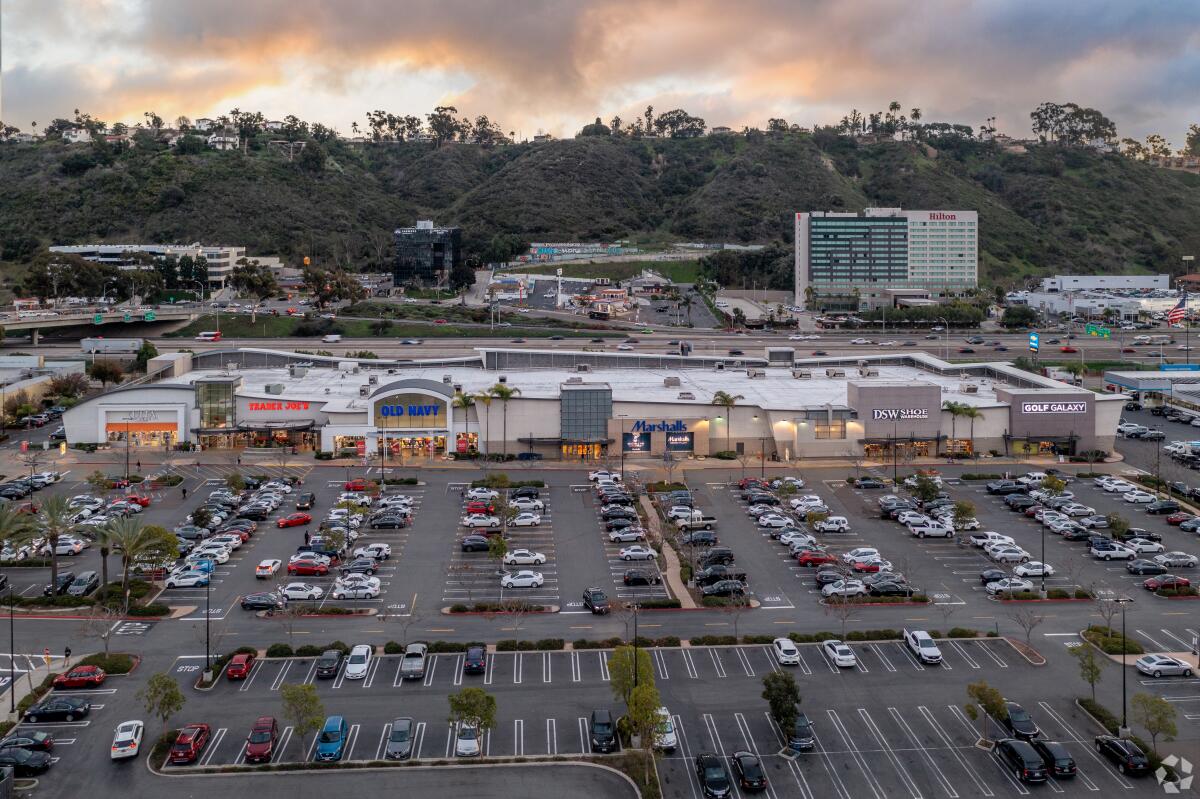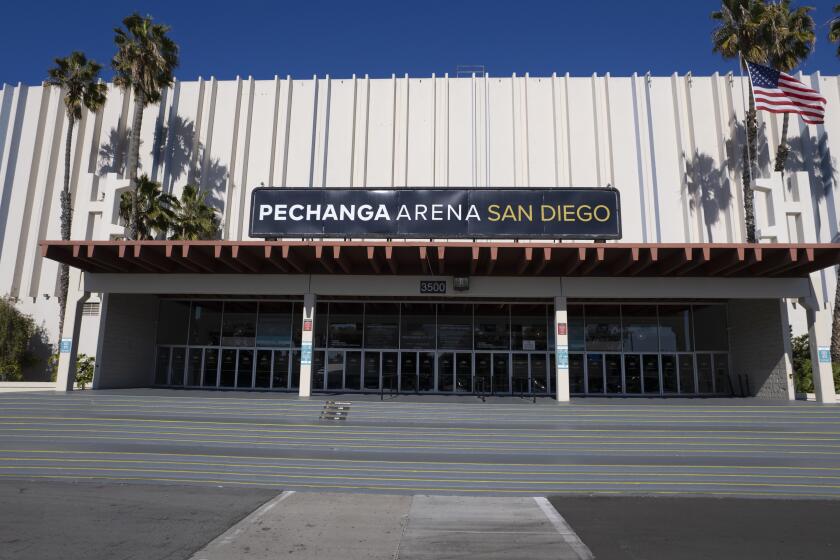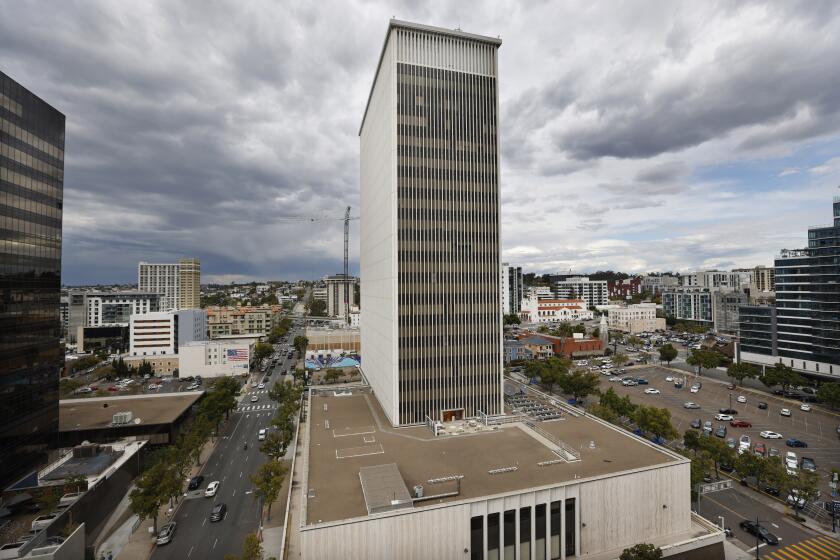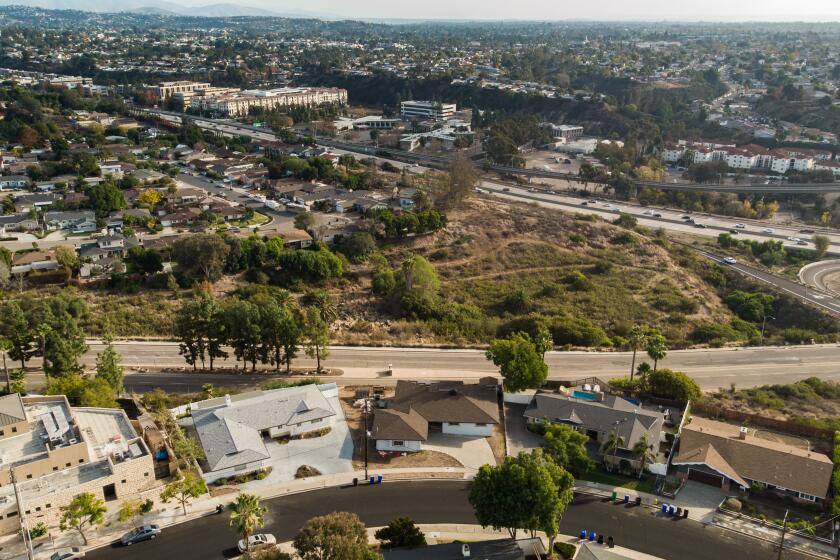Westfield ready to rethink Mission Valley West shopping center

Mall owner is seeking a land-use change that will allow for additional development, including residential units, on the nearly 20-acre property.
Westfield is seeking to remove the red tape restricting the development potential of its nearly 20-acre Mission Valley West shopping center just west of Mission Center Road.
The property owner is close to securing an amendment to the Mission Valley Community Plan that would strike the shopping center from what’s known as the First San Diego River Improvement Project Specific Plan, a 41-year-old land-use document that complicates redevelopment.
The change would boost the value of the land by allowing for additional development, including residential units, on the site.
Thursday, San Diego’s Planning Commission voted unanimously in favor of recommending approval of the amendment. The action advances the matter to the City Council for final consideration.
Not to be confused with the larger Westfield mall across the street, Westfield Mission Valley West — bounded by Camino De La Reina, Mission Center Road, Camino Del Rio North and Camino Del Arroyo — is framed by single-story retail shops and restaurants, including Trader Joe’s, Old Navy and Puesto. The suburban-style center’s interior is dominated by surface parking spaces, and there’s a Chevrolet car dealership at the southwest corner of the property.
The property currently falls within a 261-acre region subject to flooding by the San Diego River. The aforementioned specific plan, first approved in 1982, provided for flood protection in the area and created a financing mechanism, known as a maintenance assessment district, to pay for supporting infrastructure.
“The infrastructure envisioned by the specific plan has been constructed,” according to a staff report prepared for the Planning Commission. “Removal of the property from the specific plan will have no impact on the assessment district, and the property will remain obligated to participate in assessments in the district.”
Both Westfield and the city are characterizing the proposed change as in keeping with the new Mission Valley Community Plan, which was adopted in 2019. The 30-year framework creates room for 50,000 additional residents and 7 million more square feet of commercial development, most of it in mixed-use villages where residents and workers are less reliant on cars to get around.
“No construction will take place with this action, just the removal of an old specific plan boundary to create conformance with (the) existing community plan and zoning,” said Kimberly Brewer, who is the senior vice president of development for Westfield. “In summary, it is clean up based on the new community plan.”
With the change, the Mission Valley West property will be zoned for mixed use, which allows for a combination of office space, research labs, shops, warehouses and multifamily residences.
“As a community planning group, we were supportive of this action because it just allows (Westfield) to consider options that are consistent with the community plan that was comprehensively updated in 2019,” said Jonathan Frankel, who is the chair of the Mission Valley Community Planning Group.
Westfield hopes to decide on a direction for the site later this year, Brewer said.
Meanwhile, parent company, Unibail-Rodamco-Westfield, which took over Westfield in 2018, continues to move forward with a plan to sell all of its U.S. properties. In late December, the company sold The Village outdoor shopping center in Woodland Hills for $325 million to the Kroenke Organization. As of Jan. 3, Unibail had collected $1.3 billion in proceeds from the ongoing sale of its U.S. portfolio.
Get U-T Business in your inbox on Mondays
Get ready for your week with the week’s top business stories from San Diego and California, in your inbox Monday mornings.
You may occasionally receive promotional content from the San Diego Union-Tribune.









